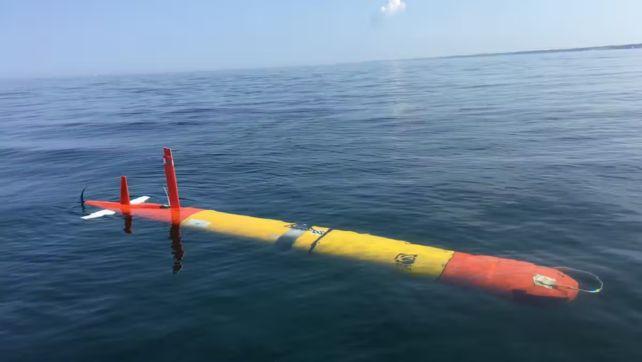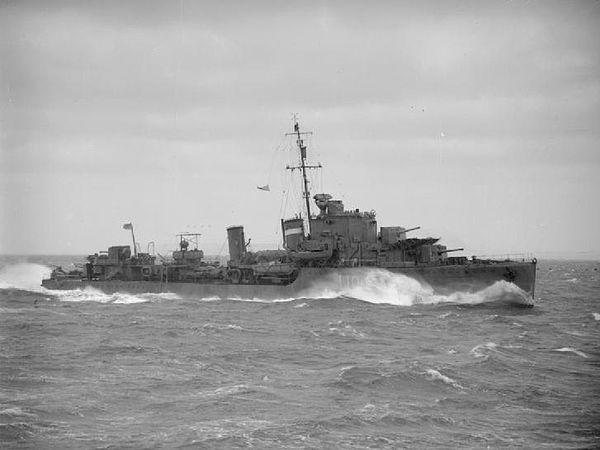| IN A NUTSHELL |
|
At the bottom of the world’s oceans lie remnants of history that pose a pressing threat to our future. More than 8,500 shipwrecks from the two world wars are submerged, containing an estimated 6 billion gallons of oil, along with toxic heavy metals and even chemical weapons. For decades, these wrecks have been largely forgotten, their structures slowly degrading and increasing the risk of a sudden release of toxic substances into the marine environment. With climate change accelerating the breakdown of these wrecks through rising ocean temperatures and acidification, it’s crucial to address this looming environmental catastrophe.
The Hidden Dangers Beneath
Shipwrecks from the world wars are not just historic remnants; they are ticking time bombs with the potential to unleash environmental disasters. These wrecks contain vast amounts of oil and hazardous materials, posing a significant threat to marine life and coastal communities. The degradation of these shipwrecks over time increases the risk of catastrophic spills. With the ocean’s delicate ecosystem at stake, immediate action is necessary to mitigate potential environmental damage.
As the wrecks deteriorate, they threaten to release their toxic contents, impacting not just marine biodiversity but also the livelihoods of people who depend on the ocean. The cost of addressing this global issue is staggering, estimated at $340 billion, highlighting the urgent need for a coordinated international response. Leaving these dangers unaddressed is not an option; the risks are too great, and the consequences too severe.

Mapping the Problem
Understanding the scale of the problem is the first step toward finding a solution. While researchers have worked tirelessly to map the ocean’s depths, only about 23 percent of the world’s oceans have been described and mapped in detail. This lack of detailed mapping complicates efforts to locate and assess the condition of shipwrecks. The Seabed 2030 project aims to improve this by achieving a universal resolution of 100x100m, providing transformative insights into the ocean floor.
Despite these efforts, many wrecks remain elusive, especially in shallower coastal waters where they pose the greatest threat. Historical records, like those held by Lloyd’s Register Foundation, are invaluable in identifying the locations of these wrecks. However, inaccuracies in these records mean that many wrecks are still misattributed or mislocated. To address this, there is a need for advanced technologies and collaborative approaches to enhance our understanding and management of these maritime hazards.

“Vanished in a blink” – This glacier’s disappearance, captured from space, shocks the world
A Race Against Time
The urgency to address the threat posed by shipwrecks cannot be overstated. With the ocean becoming increasingly busy with fishing and the development of offshore energy installations, the risk of disturbing these wreck sites is greater than ever. This poses a significant challenge, as the responsibility for these wrecks is often unclear, with many lying in international waters or off the shores of countries uninvolved in their original ownership.
Legal complexities, such as sovereign immunity, further complicate the issue, leaving many shipwrecks without a clear path to remediation. The need for an interdisciplinary approach is evident, bringing together experts from various fields to develop solutions. Advances in technology, such as Autonomous Underwater Vehicles (AUVs), offer promising tools for surveying wrecks and assessing their conditions. However, without a robust regulatory framework and international cooperation, these efforts may fall short.

Booms From Above: These Mysterious Skyquakes Are Stumping Experts Worldwide
Innovative Solutions and Global Cooperation
To tackle the monumental task of addressing shipwrecks, innovation and collaboration are key. AUVs provide a cost-effective and environmentally friendly way to gather high-resolution data on wrecks, helping to identify those that pose the greatest threat. Coupled with archival research and data sharing, these technologies can significantly enhance our understanding of the risks and inform targeted interventions.
Project Tangaroa represents a global partnership aimed at developing the necessary framework to address the challenges posed by shipwrecks. This initiative seeks to establish technical standards for remediation and secure the political will and financing needed to make significant progress. By sharing data and ideas, we can work towards a future where shipwrecks no longer threaten our oceans and coastal communities.
The hidden dangers of shipwrecks are a pressing issue that demands immediate attention. The environmental and safety risks they pose are significant, and the cost of inaction is too high. As we work towards solutions, the question remains: How can we ensure that the lessons learned from this challenge lead to a more sustainable and secure future for our oceans?
Did you like it? 4.3/5 (30)








Fascinating article! Are there any policies in place to monitor these wrecks currently? 🤔
Wow, 8,500 shipwrecks! I had no idea there were so many. Time to put on my pirate hat and go searching! 🏴☠️
Thanks for bringing this issue to light. It’s alarming to think about the potential damage. 🌊
Why has it taken so long to address these shipwrecks? Seems like a ticking time bomb!
Great article! But what about the legal aspects? Who’s responsible for cleaning up these wrecks?
Typical govt bs, don’t address the problem until it’s too late.
This is a serious issue that needs more attention. Can’t believe it’s not in the headlines more often.
Interesting read, but what can individuals do to help in this situation?
So are these AUVs being used anywhere else besides shipwrecks to help the ocean? 🐋
Project Tangaroa sounds intriguing. How can I learn more about it or get involved?
How do they know there are 8,500 shipwrecks if only 23% of the ocean is mapped?
Thank you for this informative article. Our oceans are so important, and this issue is crucial! 🌎
Is there a list of the most dangerous shipwrecks? I’d love to see who’s on top!
As if we needed another reason to be worried about the state of our planet. 😟
Interesting piece, but what’s the timeline for these shipwrecks to become a disaster?
Somebody call Aquaman! We’ve got some serious ocean drama going on. 🐠
Not sure what to make of this. How reliable is the data on these shipwrecks?
Is there any historical value in preserving these shipwrecks? Or is it all about the environmental risks?
This sounds like a job for James Cameron and his submarine! 😄
Can AUVs actually prevent disasters or just help in monitoring the situation?
Wow, I didn’t know climate change was affecting shipwrecks too. What a world!
Grateful for this article. We need more awareness on ocean issues. Thank you! 🙏
Could these shipwrecks potentially be used for something beneficial, like reefs?
How accurate are these WW2 ship locations? Seems like a treasure hunt waiting to happen.
Is there any effort from governments to fund this cleanup? Seems expensive!
Are there any success stories of shipwrecks being successfully neutralized?
It’s surprising how little of the ocean is mapped. What are the biggest challenges?
Who knew that history could come back to haunt us like this?
Do we know which countries have the most shipwrecks in their waters?
Yes, we should do a Trump and send a bill to Germany and Japan. We never charged Either. Time to start making some money from our awesome losses. I’m sure if it was worked on tonnage, which it should be, ours will be well over 50%. Plus interest It would come to a very tidy sum; justifiable through them as the aggressors. I’m not counting men, materials, pain and suffering etc.
Meanwhile we should also start charging the USA for guarding them until 1776 from the, Indian- French and Spanish Wars. Not to say for the West African Squadron suppressing their illegal Slave Trade.
There is a lot the French and rest of Europe owe us for 1940-45 and that’s not counting the Napoleonic Wars where we would be owed by the Spanish too. I nearly forgot the Russia Arctic Convoys and the bill for lost men, ships and material. All told it could easily come to a several of trillion GBP so add in minerals and we are back in business and some.
Starmer needs money for Defence. Go for it. Not even Charging Trump for backrent on The Chagos or Argentina for 1982. Its a fortune.
I can’t help but wonder how many of these wrecks have already leaked. 😬
Is there any technology besides AUVs that can help with this problem?
Hopefully, global cooperation will make a difference. Let’s hope it’s not too late!
Are there any documentaries on this topic? Would love to watch one! 📽️
The ocean is full of mysteries, and this just adds another layer. So intriguing!
What happens if we do nothing about these shipwrecks? Is it really that bad?
How many people ent down on these ships???